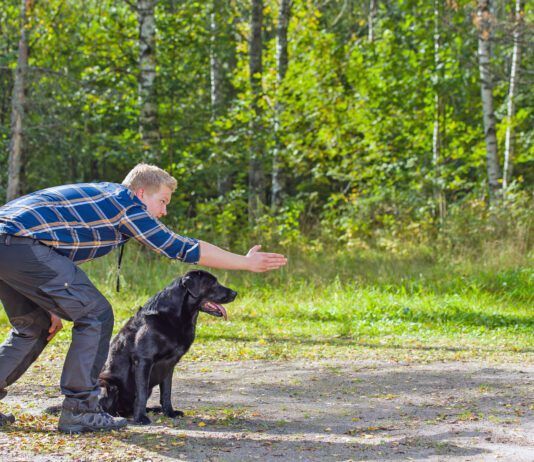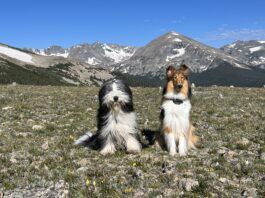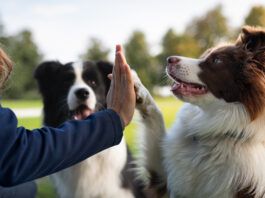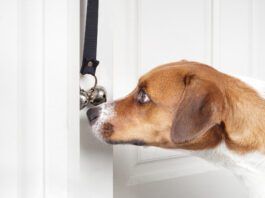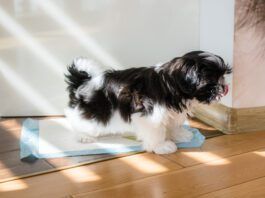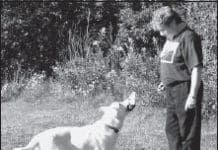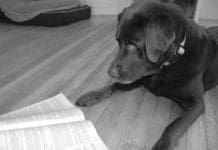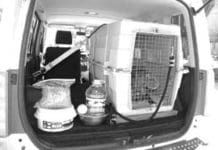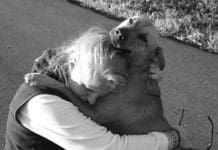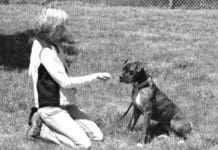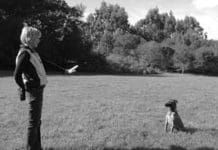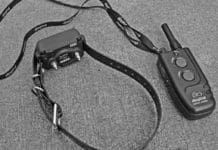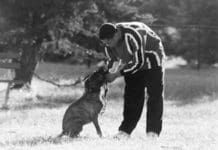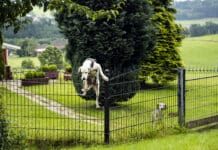Teaching a Dog to Play Fetch
Last week a trainer friend stopped by to visit with her three dogs: Star, Kaiya, and Lhotse. As we were chatting, Laura confessed to me that she thought she'd ruined Star's "fetch" with the clicker. "She had a great retrieve," Laura said, "until I started clicking her for it. Now she just drops it as soon as I click. I stopped working on it because I knew I was messing it up." I chuckled to myself. I knew this would be a fun - and easy - training fix.
Teaching Your Dog to Read
Don't laugh. If Bonnie Bergin, EdD, has her way, dogs all over the world will soon be reading maybe not books and articles, but individual words or sets of words strung together. Now president of the Bonnie Bergin Assistance Dog Institute, the world's only academic college that awards associate and master's degrees in dog studies, Dr. Bergin originated the service dog concept when she founded Canine Companions for Independence more than 30 years ago.
Driving Safely with Your Dog
When I'm driving on the road and see a dog in someone else's car, it makes me smile. I love it when people care enough about their dogs to chauffeur them around town. I love it even more when the dog is in a crate or seat belted in place. My smile quickly vanishes, however, if the dog has her head stuck out the window, is sitting in the driver's lap, darting back and forth across the seats, or worse, riding loose in the back of an open pickup truck. And the ultimate crime leaving a dog in a hot car motivates me to grab my cell phone and call out the animal cops. As much as we love our dogs and want them with us all the time, we have an incontrovertible obligation to transport them safely, for their own welfare as well as ours, and that of other drivers on the roads. All dogs, large and small, should learn to ride politely in their cars. There's a long list of safety hazards concomitant with having an unrestrained obstreperous canine in a moving vehicle.
Consistent Dog Training With Regards to Men and Women
In general, men tend to be more physical with their dogs, and more assertive, enjoying rough-and-tumble wrestling games and expecting the dog to understand and obey. Women tend to be softer, more into cuddling than wrestling, and take more interest in teaching the dog to understand the complex world of primate (human) communication.
Dog Trainers Note How Men and Women May Train Differently
Men are from Mars. Women are from Venus. Dogs are from Neptune. A well-known trainer recently made a public comment about men’s inability to act silly with their dogs, to the detriment of their ability to use positive training methods effectively. Are we really three alien species, destined to live forever in a world of miscommunication and misinterpretation? Is one gender truly better suited to bridge the communication gap between the human and canine species?
Positive Methods for Obedience Training
How to teach your dog to look to you (literally!) for direction. Look is a combination behavior. It is more than the “Leave it” or “Off.” It is more than the ever-popular “watch me.” It involves the dog breaking eye contact with the arousing object, person, or animal (whatever triggers the dog’s manic behavior); turning his head away from that trigger; making eye contact with you; and holding that eye contact until you give a release signal.
Training a Dependable “Stay”
How to produce a completely dependable "stay" in your dog, no matter what the distraction. (Hint: It takes a lot of practice!) We were on our usual morning neighborhood walk. All of a sudden, three children on bikes sped past us on the sidewalk, racing each other on the way to school. The faster and older children raced around the corner, leaving the younger bicyclist in their dust.
Fun Dog Training Techniques Using Shaping!
it doesn't require the dog to figure out for herself what exactly it is that you want.üThis dog is learning to flick a light switch. At first
Train Your Dog to Target
During the two-plus decades that I trained my dogs in old-fashioned obedience classes, I never learned the pervasively useful and versatile behavior of targeting. The closest I came was the narrow application to go-outs" in advanced level competition classes not really the same thing at all. Even today
The Canine Shock Collar Debate
The chasm between those who abhor the electronic/shock collars as an abusive dog training tool and those who support and promote it as an exceptionally effective and humane training tool is so huge it will probably never be bridged. In more moderate positions in the middle of that chasm are those who believe that the collar can be an effective training tool for very limited circumstances in the hands of skilled professionals, and those who prefer not to use them but feel compelled to educate clients who insist on using them on how to use them properly.
Training Your Dog To Come When Called
When it comes to learning to come when called, not all dogs are created equal. Some dogs learn the “recall” very easily. They seem to know instinctively that coming when called is to their advantage. Others will come when called most of the time, perhaps more reluctantly. For some dogs, however, coming when called is the most challenging behavior they will ever learn – especially when faced with choosing between complying with the request and distractions like squirrels, cats, balls, or other dogs.
Runaway Dog: Preventing Your Dog From Escaping
How to safely confine burrowers, bounders, beavers, and bolters. Otis the Bloodhound was an opportunistic escapee. I discovered his talent one day while working at the front desk at the Marin Humane Society, early in my animal protection career. A woman came in asking if we might know where a Bloodhound lived, because he kept visiting her house every day. He was charming, she said, but she worried that he might get hit by a car.


